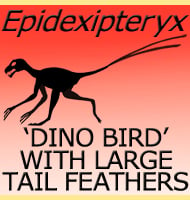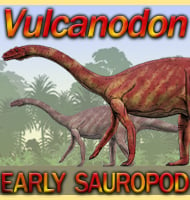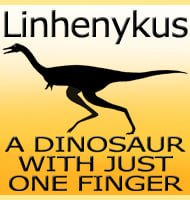In Depth
In terms of paleontological study, Hadrosaurus was a genus of firsts. One of the things that the genus is famous for is that it was the first dinosaur to have a skeleton mounted for public display. Earlier reconstructions such as the now outdated dinosaurs of Crystal Park in England are brick and concrete models of what the dinosaurs were thought to look like in life. The first mounted skeleton of Hadrosaurus however also had to be completed by making up many of the missing bones to what they were thought to be like.
The partial remains of Hadrosaurus were first discovered in 1838 when a man named John Estaugh Hopkins was digging in a marl pit (a marl pit is essentially a deposit of mudstone). Parts of many of the important body parts were such as partial limbs and the pelvis were found, but the ribs, most of the vertebrae and most importantly a skull were not found. These missing parts are what makes it difficult to not only establish the true length of Hadrosaurus, but also how the genus relates to other later named hadrosaurs, more detail on this though further down.
As already mentioned above, Hadrosaurus was the first cast skeleton to be put together for public display. This mounting took place in 1868 and was overseen by the famous American palaeontologist Joseph Liedy who had described the remains ten years earlier. This mount had to be completed with additional sculpted parts, and the end result was what would have been a common rendition of an ornithopod dinosaur from the late nineteenth century until the latter decades of the twentieth. Liedy interpreted Hadrosaurus as being an obligatory bipedal dinosaur due to the greatly enlarged rear legs, and since dinosaurs were still being treated as exceptionally large lizards back then, the tail hung limply behind the body where it was dragged along the floor. The overall posture was that of a creature that walked with its spine nearly vertical to the ground. Today we now know that such reconstructions are to be blunt wrong, though to be fair they were still more accurate than the first dinosaur renditions at Crystal Park. Hadrosaur dinosaurs are now known by dozens of different genera, some of which are almost complete and even show impressions of soft tissues like skin and muscle. For a start, Hadrosaurus would have been a primarily quadrupedal dinosaur as while the rear legs were the main weight bearing features, the fore legs were also adapted for weight bearing as well. This means the spine of Hadrosaurus would have actually of been nearer horizontal to the ground rather than vertical in the older reconstructions. It should be pointed out though that while Hadrosaurus mostly walked around in a quadrupedal stance, Hadrosaurus could have still reared up on their hind legs to reach higher food. They may have also been able to ‘run’ on just the rear legs when escaping predators.
Hadrosaurus was the first named hadrosaur, in fact that is why hadrosaurs are called hadrosaurs, the name of a group of animals is always based upon the first named genus. As such Hadrosaurus is the type genus of the Hadrosauroidea and the Hadrosauridae. The latter group is for true hadrosaurs like Maiasaura and Edmontosaurus, while the Hadrosauroidea was for genera that are hadrosaurid like but not quite like Tanius and Jeyawati.
Hadrosaurids can be divided into two groups of hollow and solid crested genera. The hollow crested genera are usually referred to as lambeosaurines after the genus Lambeosaurus. Solid crested genera, or even those without crests, used to be referred to as hadrosaurines after the type genus. However as already stated, the skull of Hadrosaurus is unknown and the remaining bones are too undiagnostic to prove it was anything other than a hadrosaur, so there is no telling what kind or indeed if any crest was present in Hadrosaurus. For this reason a new sub group was created called the Saurolophinae after Saurolophus, and this contains all of the current solid/no crested genera. At the time of writing, Hadrosaurus sits alone within the Hadrosaurinae, and unless new and more complete fossils of Hadrosaurus are found, this is how things will remain.
Principal predators of Hadrosaurus would have been large tyrannosaurs, but giant crocodiles were also in North America during the late Cretaceous. Other theropod dinosaurs such as dromaeosaurs and troodonts could have also posed a threat, especially to not yet fully grown juvenile Hadrosaurus.
Further Reading
- Revised diagnoses of Hadrosaurus foulkii Leidy, 1858 (the type genus and species of Hadrosauridae Cope, 1869) and Claosaurus agilis Marsh, 1872 (Dinosauria: Ornithopoda) from the Late Cretaceous of North America, A. Prieto-M�rquez - 2011. - The dinosaur Hadrosaurus foulkii, from the Campanian of the East Coast of North America, with a reevaluation of the genus, A. Prieto-M�rquez, D. B. Weishampel & J. R. Horner - 2006.









